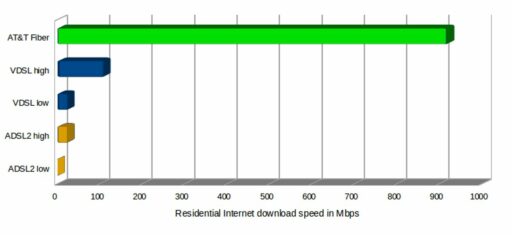Pinterest, the popular image-sharing platform, not only serves as a hub for inspiration and creativity but also stands as a significant player in the social media investment landscape. The company’s financial outlook, its role in the evolving social media ecosystem, investor perspectives on its market potential, and its impact on retail and consumer behavior all intertwine to reflect broader trends in social media investing. This article delves into how Pinterest’s stock performance offers insights into these emerging trends.
Key Takeaways
- Pinterest projects a compound annual growth rate in the mid to high teens for revenue, with an EBITDA margin in the low 30% range over the next three to five years.
- The platform’s strategic positioning to capture online advertising spend is bolstered by long-term trends shifting budgets to online channels.
- Pinterest’s alignment with commercial content from brands and advertisers is central to its business model, with the majority of Pins saved coming from businesses.
- User engagement on Pinterest is high, with a significant percentage of Pinners discovering new brands or products, highlighting its competitive differentiation.
- The shopping experience on Pinterest is a strategic focus, with unbranded searches offering advertisers a substantial opportunity to target users who are inclined to shop.
Pinterest’s Financial Outlook and Revenue Growth

Projected Compound Annual Growth Rate
Pinterest’s financial trajectory is marked by an anticipated compound annual growth rate (CAGR) in the mid to high teens for its revenue over the next three to five years. This projection aligns with broader industry trends, where the digital advertising market is expected to expand significantly.
The platform’s growth is intricately linked to its user base and engagement levels. As Pinterest’s Monthly Active Users (MAUs) and the quality of user engagement increase, the potential for revenue generation correspondingly rises. This is evidenced by the historical uptick in Average Revenue per User (ARPU), which saw a 25% increase globally from 2017 to 2018.
Pinterest’s strategic focus on enhancing user engagement and content discovery is poised to capitalize on the growing digital advertising space, which is projected to reach $423 billion by 2022.
The following table illustrates Pinterest’s ARPU growth:
| Year | Global ARPU | U.S. ARPU | International ARPU |
|---|---|---|---|
| 2017 | $2.51 | $6.14 | $0.20 |
| 2018 | $3.14 | $9.04 | $0.25 |
The company’s financial outlook is bolstered by the substantial growth potential in the digital advertising sector, particularly within consumer packaged goods (CPG) and retail industries.
Earnings Before Interest, Taxes, Depreciation, and Amortization (EBITDA) Margins
Pinterest’s approach to financial health can be significantly illuminated by examining its EBITDA margins. Adjusted EBITDA serves as a critical metric for the company, stripping away certain expenses to provide a clearer view of operational performance. This adjustment includes the exclusion of depreciation and amortization expense, share-based compensation expense, interest and other income (expense), net, and provision for income taxes.
Adjusted EBITDA is utilized not only as a measure of profitability but also as a tool for financial and operational decision-making. It reveals trends that might be obscured by the volatility of income and expenses.
The following table outlines Pinterest’s Adjusted EBITDA over recent periods:
| Period | Adjusted EBITDA (in thousands) |
|---|---|
| Q1 | $(51,266) |
| Q2 | $(26,956) |
| Q3 | $(26,864) |
| Q4 | $12,091 |
These figures underscore the fluctuating nature of Pinterest’s earnings before interest, taxes, depreciation, and amortization, reflecting both the challenges and opportunities faced by the company in a dynamic social media environment.
Strategic Positioning for Revenue Capture
Pinterest’s strategic positioning for revenue capture is multifaceted, focusing on enhancing user experience while scaling its advertising capabilities. The company is in the early stages of monetizing its platform, aiming to attract more advertisers by expanding its sales efforts and advertising product offerings. This includes self-serve tools that empower advertisers to create, buy, forecast, optimize, and measure ad performance with ease.
Pinterest’s ability to compete for advertising revenue hinges on reaching users early in the decision-making process and delivering compelling returns on investment.
The platform’s revenue model is built upon delivering ads on its website and mobile application, with revenue recognized upon user interaction—either through clicks on a CPC basis or views on a CPM basis. Pinterest’s billing practices vary by customer type and location, but the focus remains on providing a seamless transactional experience.
To deepen relationships with advertisers, Pinterest prioritizes:
- Enhancing reach, relevance, and engagement
- Offering robust brand and advertising products
- Improving delivery and measurement capabilities
Despite the competition for advertising revenue, Pinterest’s unique value proposition lies in its ability to amplify advertisers’ messages within its ‘joyful’ user experience, as noted by Pinterest Chief Revenue Officer Bill Watkins.
The Role of Pinterest in the Evolving Social Media Landscape

User Engagement and Content Discovery
Pinterest’s unique value proposition lies in its ability to foster user engagement through a blend of user-generated content and sophisticated recommendation systems. The platform’s emphasis on visual discovery and personal curation has led to a high level of user interaction and time spent on the site.
- User-generated content and social proof are pivotal in driving engagement.
- The recommendation engine leverages user modeling and data science to enhance the product experience.
- Ease of use and utility are key competitive factors in retaining user attention.
Pinterest’s approach to content discovery not only keeps users engaged but also serves as a critical factor in attracting new users and retaining existing ones.
Commercial Content and Advertiser Alignment
Pinterest’s unique value proposition for advertisers lies in its ability to seamlessly integrate commercial content into the user experience. Advertisers are drawn to Pinterest for its localized content and strong monetization potential, which is bolstered by the platform’s self-serve tools available to international advertisers.
Pinterest’s ad product suite has evolved to drive value for both users and advertisers, reflecting a strategic alignment that has been a focus since the company’s inception.
The platform’s strategy to deepen relationships with advertisers is centered around two main priorities:
- Enhancing the relevance and effectiveness of ad content for users.
- Providing robust analytics and self-serve tools to empower advertisers.
This dual approach ensures that while users discover inspiring and relevant content, advertisers can effectively reach their target audience, leading to a symbiotic ecosystem that benefits all parties involved.
Competitive Differentiation and Brand Relevance
In the fiercely competitive social media arena, Pinterest’s unique value proposition hinges on its ability to capture users early in their decision-making process. This strategic advantage amplifies advertiser messages and drives compelling returns on investment. The platform’s competitive edge is further sharpened by its user-friendly interface, robust performance, and the attractiveness of its product offerings.
- Ease of use and reliability of Pinterest’s solutions
- Volume and attractiveness of product and service offerings
- Strength of advertiser relationships and offerings
- Integration of advertising products into existing advertiser budgets
Pinterest’s relevance in the advertising space is not just about the volume of users but the quality of engagement and the seamless integration of commercial content into the user experience.
The platform’s ability to fit advertising products into existing budgets and the strength of its advertiser relationships are critical factors that advertisers weigh against competitor offerings. Pinterest’s focus on these areas reflects a deep understanding of what it takes to remain relevant and competitive in the ever-evolving social media landscape.
Investor Perspectives on Pinterest’s Market Potential

Analyst Insights and Long-term Targets
Wall Street analysts, renowned for their market acumen, are signaling optimism about Pinterest’s long-term market potential. Top analysts, ranked by platforms like TipRanks, suggest that Pinterest’s unique position in the social media space could lead to compelling returns. They highlight the company’s ability to innovate, as seen with new offerings like GenStudio, and its consistent performance, even amidst market uncertainties.
Analysts also underscore the importance of Pinterest’s strategic focus on unbranded searches and the shopping experience, which could unlock additional monetization opportunities. The following table summarizes the insights and targets from leading analysts:
| Analyst | Ranking | Success Rate | Average Return |
|---|---|---|---|
| Zelnick | No. 50 | 71% | 15.5% |
Despite short-term pressures, the long-term outlook for Pinterest remains robust, with analysts emphasizing the platform’s potential to outperform in the evolving social media landscape.
Investors are encouraged to consider these insights alongside historical performance and market valuations of related businesses to gauge Pinterest’s business potential and earnings prospects.
The Significance of Unbranded Searches
The landscape of social media is continuously evolving, and Pinterest’s unique position in this ecosystem is underscored by the nature of user searches on the platform. Unbranded searches represent a significant portion of activity, indicating a user base that is open to discovery and not necessarily loyal to specific brands. This trend is a clear signal to investors about the potential for new and emerging brands to gain traction on Pinterest.
- 97% of searches on Pinterest are unbranded, suggesting a high level of user openness to brand discovery.
- Pinterest’s algorithm is designed to capitalize on this behavior, promoting content that aligns with user interests, regardless of brand recognition.
- The platform’s focus on visual discovery further enhances the likelihood of users engaging with new brands.
The significance of unbranded searches on Pinterest cannot be overstated. It reflects a user intent that is exploratory in nature, which is a valuable asset for advertisers seeking to introduce their brands to new audiences. The potential for brands to connect with consumers during the early stages of their buying journey presents a strategic opportunity for revenue growth.
Shopping Experience as a Strategic Focus
Pinterest’s emphasis on enhancing the shopping experience is a testament to its strategic focus on e-commerce integration. By creating a seamless bridge between inspiration and purchase, Pinterest caters to the needs of both users and advertisers. The platform’s ability to drive sales through visual discovery has made it an attractive destination for brands looking to tap into consumer intent.
Pinterest’s unique positioning in the market, with its blend of social media and e-commerce, allows it to capitalize on unbranded searches, which are significant for product discovery.
The shopping features on Pinterest not only facilitate user purchases but also provide valuable data on consumer behavior. This data is crucial for brands to refine their marketing strategies and for Pinterest to further tailor the user experience. The following points highlight the strategic importance of the shopping experience on Pinterest:
- Integration of buyable pins to reduce friction in the purchasing process
- Use of rich pins to provide up-to-date product information
- Personalized recommendations based on user activity and preferences
- Partnership with retailers to expand the range of shoppable content
Pinterest’s Impact on Retail and Consumer Behavior

Influence on Household Purchasing Decisions
Pinterest’s unique position in the social media landscape has profoundly influenced consumer behavior, leading to increased brand loyalty and sales. The platform’s visual nature and focus on inspiration make it a powerful tool for influencing purchasing decisions. According to a media agency’s guide, Pinterest influences what people buy more than any other search or social platform, with nine out of ten users turning to Pinterest for purchase inspiration.
Pinterest’s impact on retail is significant, as it not only drives direct sales but also shapes long-term consumer preferences and brand perceptions.
The social aspect of Pinterest, including user-generated content such as customer reviews and testimonials, plays a crucial role in swaying consumer behavior. This peer influence is a testament to the platform’s ability to create a community around brands and products, encouraging users to engage not just with content but with each other, thereby amplifying the impact on household purchasing decisions.
Engagement with Brands and Retailers
Pinterest’s unique visual discovery platform has become a critical space for brands and retailers to engage with their target audiences. Brands that actively engage on Pinterest can significantly increase their visibility and consumer interaction. This engagement is not just about posting content, but also about fostering a community through responsive communication and collaboration with influencers who resonate with the brand’s values.
- Actively respond to comments, messages, and reviews to build trust and community.
- Collaborate with influencers whose values align with the brand for authentic promotion.
- Amplify user-generated content to highlight authentic product experiences.
- Utilize real-time feedback to adapt strategies and improve customer satisfaction.
Pinterest’s environment offers a unique opportunity for brands to receive immediate consumer feedback, which is invaluable for tailoring products and marketing strategies to meet the evolving preferences of their audience.
The Role of Pinterest in the Customer Journey
Pinterest’s platform facilitates a unique customer journey, where Pinners travel from inspiration to action. This journey is not linear but a continuous loop, allowing advertisers to engage with potential customers at multiple touchpoints. The platform’s structure supports a range of advertiser objectives, from brand awareness to final sales conversions.
The natural progression of the Pinterest discovery journey aligns perfectly with the goals of businesses. It encompasses the full purchasing funnel, enabling advertisers to insert relevant content at strategic points, whether a Pinner is browsing options, comparing selections, or ready to make a purchase.
The customer journey on Pinterest can be summarized in three key stages:
- Inspiration: Pinners start with broad exploration, seeking ideas and inspiration.
- Planning: As they refine their interests, they begin planning and comparing options.
- Action: Finally, they move towards making a purchase, influenced by the content they’ve engaged with.
This cyclical journey underscores the platform’s value in guiding consumer behavior and influencing purchasing decisions, making Pinterest an integral part of the modern customer journey.
Conclusion
Pinterest’s stock performance is a compelling indicator of the broader shifts occurring in social media investing. With the company’s ambitious revenue and EBITDA margin projections, alongside its strategic positioning to capture the migration of advertising budgets to online channels, Pinterest stands as a testament to the potential of social platforms that align commercial and user interests. The platform’s ability to drive retail purchases and its significant role in product discovery underscore its value proposition to advertisers. As social media investing evolves, Pinterest’s focus on becoming a shopping hub, where a vast majority of searches are unbranded, offers a unique opportunity for advertisers to reach consumers at the early stages of their buying journey. The company’s performance and strategy reflect a deep understanding of the emerging trends in social media, where the integration of commerce and content is becoming increasingly seamless and vital for sustained growth.
Frequently Asked Questions
What is Pinterest’s projected compound annual growth rate?
Pinterest expects a compound annual growth rate in the mid to high teens for its revenue over the next three to five years.
What are Pinterest’s expectations for EBITDA margins?
Pinterest anticipates an earnings before interest, taxes, depreciation, and amortization margin that is in the low 30% range over the next three to five years.
How is Pinterest positioned to capture revenue from online advertising budgets?
Pinterest is considered well-positioned to capture spending from advertising budgets that are shifting to online channels, according to industry trends.
What impact does Pinterest have on retail purchasing decisions?
A study showed that Pinterest households are 39% more likely to buy retail products and spend 29% more than the average household.
How significant is commercial content on Pinterest?
Commercial content from brands, retailers, and advertisers is central to Pinterest, with the majority of Pins saved on the service coming from businesses.
What is the significance of unbranded searches on Pinterest for advertisers?
With 96% of searches on Pinterest being unbranded, advertisers have a significant opportunity to target users who are using the platform with shopping intent.





